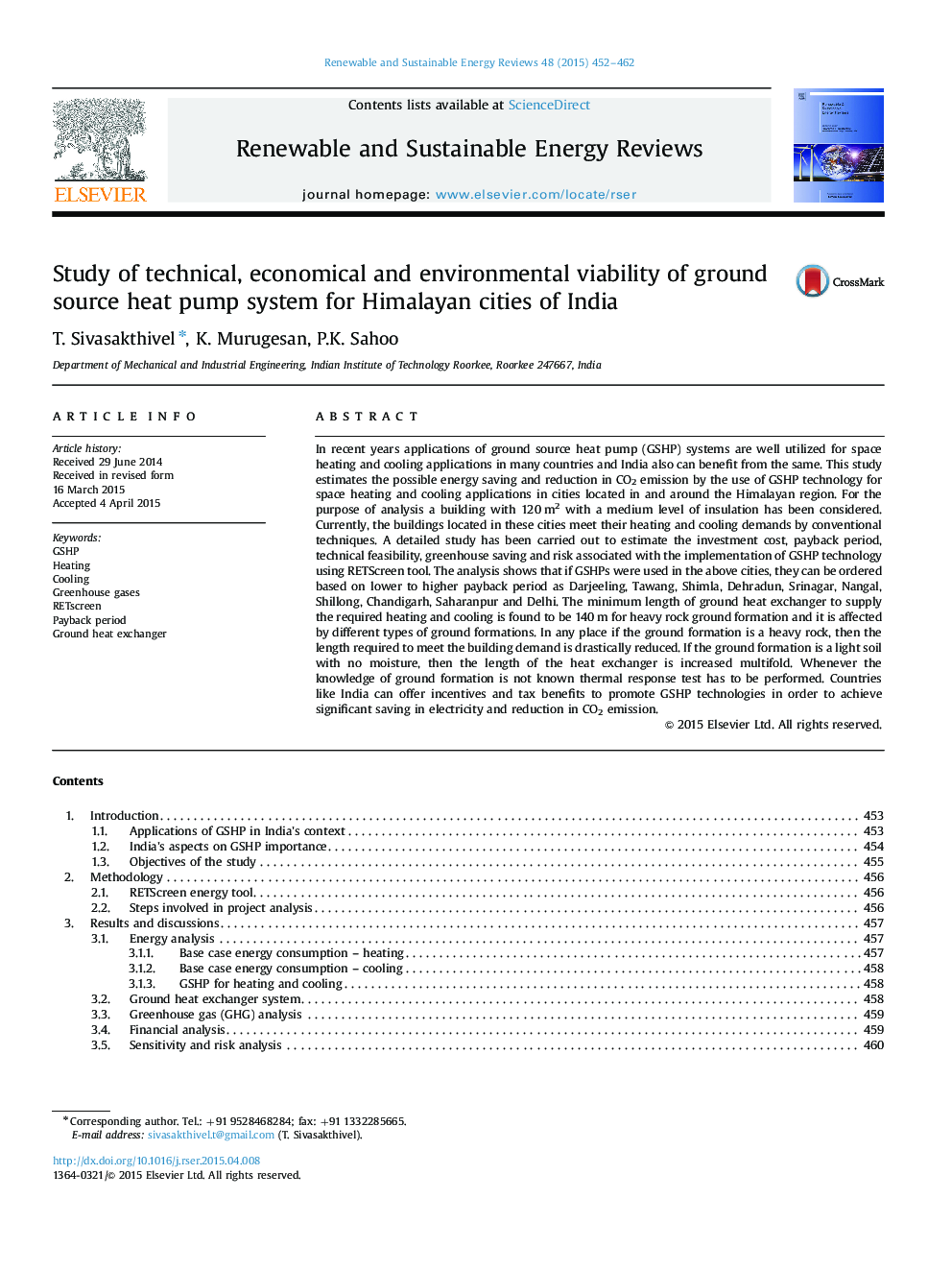| Article ID | Journal | Published Year | Pages | File Type |
|---|---|---|---|---|
| 8116473 | Renewable and Sustainable Energy Reviews | 2015 | 11 Pages |
Abstract
In recent years applications of ground source heat pump (GSHP) systems are well utilized for space heating and cooling applications in many countries and India also can benefit from the same. This study estimates the possible energy saving and reduction in CO2 emission by the use of GSHP technology for space heating and cooling applications in cities located in and around the Himalayan region. For the purpose of analysis a building with 120Â m2 with a medium level of insulation has been considered. Currently, the buildings located in these cities meet their heating and cooling demands by conventional techniques. A detailed study has been carried out to estimate the investment cost, payback period, technical feasibility, greenhouse saving and risk associated with the implementation of GSHP technology using RETScreen tool. The analysis shows that if GSHPs were used in the above cities, they can be ordered based on lower to higher payback period as Darjeeling, Tawang, Shimla, Dehradun, Srinagar, Nangal, Shillong, Chandigarh, Saharanpur and Delhi. The minimum length of ground heat exchanger to supply the required heating and cooling is found to be 140Â m for heavy rock ground formation and it is affected by different types of ground formations. In any place if the ground formation is a heavy rock, then the length required to meet the building demand is drastically reduced. If the ground formation is a light soil with no moisture, then the length of the heat exchanger is increased multifold. Whenever the knowledge of ground formation is not known thermal response test has to be performed. Countries like India can offer incentives and tax benefits to promote GSHP technologies in order to achieve significant saving in electricity and reduction in CO2 emission.
Related Topics
Physical Sciences and Engineering
Energy
Renewable Energy, Sustainability and the Environment
Authors
T. Sivasakthivel, K. Murugesan, P.K. Sahoo,
